Listing approximate price of Angiography and some related procedures. The prices may change depending upon the centers and condition of the patient.
| Treatment name | Cost range |
|---|---|
| Angiography | USD 2250 to USD 2750 |
| Angioplasty and Stent Placement | USD 5400 to USD 6600 |
| Coronary Artery Surgery | USD 12600 to USD 15400 |
Your doctor will recommend tests before angiography, including blood tests, MRI, ECG, chest X-ray, or cardiac CT. 10-15% of the total procedure cost is involved in medical tests related to the procedure. The treatment package contains the cost of the tests too.
The pharmacy and medicine bills are included in the package when the patient is in the hospital. On the other hand, if the patient buys medicines outside the hospital, they are not included in the package.
The patient has to rest for four to six hours in the hospital after the procedure is completed and can go home the same day. Sometimes the patient needs to stay in the hospital overnight. They also need follow-up tests, such as ECG, and blood tests, throughout the first year after the angiography.
For patients planning to travel abroad it is useful to know the price in destinations popular with medical travellers. The price for Angiography in different countries is approximately:
Listing popular specialists:

Prof. Dr. Friedhelm Beyersdorf
Director, 26 years of experience

Controlled automated reperfusion of the whole body (CARL) Surgical ventricular restoration Ex-vivo-Perfusion of the heart (Organ Care System) Paediatric and Congenital Heart Diseases Cardiac Catheterisation Angiography Atherectomy Peripheral Angioplasty
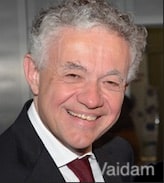
Director, 34 years of experience

Thrombosis/Coagulation Surgical ventricular restoration Ex-vivo-Perfusion of the heart (Organ Care System) Paediatric and Congenital Heart Diseases Cardiac Catheterisation Atherectomy
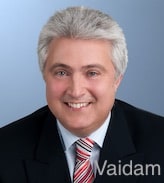
Director, 38 years of experience

Percutaneous catheter intervention for complex coronary lesions Cardiac Catheterisation Thrombosis/Coagulation Surgical ventricular restoration Ex-vivo-Perfusion of the heart (Organ Care System) Paediatric and Congenital Heart Diseases Atherectomy
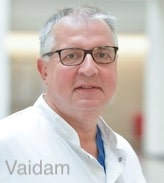
Senior Consultant, 30 years of experience

Congenital Heart Disease Thrombosis/Coagulation Surgical ventricular restoration Cardiac Catheterisation Atherectomy

Director, 25 years of experience

Cardiac insufficiency Arrhythmia Coronary heart disease Heart valve defects Pulmonary hypertension Surgical ventricular restoration
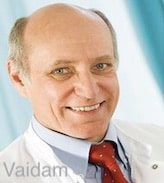
Chief, 40 years of experience

Coronary Angiogram PCI (Percutaneous Coronary Interventions) Treatment of arrhythmia Carotid Artery Disease 2D - Echocardiography (2D-Echo)

Head of Department, 35 years of experience

Angina pectoris Myocardial infarction Percutaneous coronary interventions Hypertension Chronic heart failure and cardiomyopathies Pulmonary embolism Supraventricular and ventricular arrhythmias Sudden cardiac death prevention Invasive electrophysiology Valvular heart disease
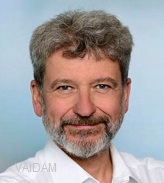
Chief, 21 years of experience

Lobectomy, Lung cancer surgery, Major blood vessels of the chest
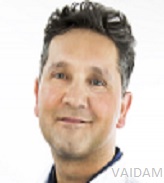
Director, 19 years of experience

Exercise ECG, Spiroergometry MRI of the heart Thyroid ultrasound Metabolic syndrome Coronary heart disease Abdominal sonography Heart valve defects Cardiac arrhythmias Strokes

Prof. Dr. Med. Sergey Leontyev
Chief, 20 years of experience

Transcatheter aortic valve implantation (TAVI), Percutaneous Coronary Intervention (PCI), Balloon Angioplasty
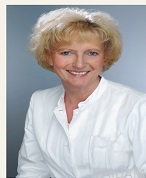
Head of Department, 20 years of experience

Catheter ablation Atrial fibrillation Cardiomyopathies Cardiac Electrophysiology Pacemaker implants Clinical cardiology

Head of Department, 41 years of experience

Electric cardioversion Cardiac computed tomography (cardio-CT) Cardiac magnetic resonance tomography (cardio MRI) Myocardial scintigraphy Percutaneous transluminal coronary angioplasty (widening a narrowing of the coronary arteries using a balloon) Stent placement Closures of defects in the heart septum (open foramen ovale / PFO, ASD)

Chief, 25 years of experience

Invasive and non-invasive cardiac diagnostics and therapy Cardiological electrophysiology Diagnostic and interventional endoscopy Interventional therapy of early-stage carcinoma
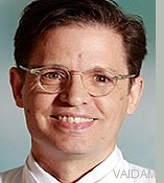
Senior Consultant, 27 years of experience

Correction of congenital heart defects, Growth induction of hypoplastic structures, Univentricular hearts

Senior Consultant, 30 years of experience

Congenital heart defects, Cardiac pacemaker, Atrial Fibrillation Ablation, Atrial Septostomym, Coronary Artery Bypass Grafting (CABG) Surgery
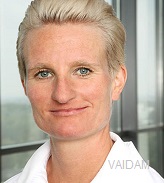
Chief, 26 years of experience

Minimally invasive resection of thymic tumors, Thoracic metastasis surgery, Therapy of hyperhidrosis, Stent placement
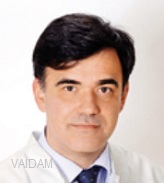
Chief, 27 years of experience

Tracheal surgery, Imaging-guided thoracoscopy, Chronic obstructive pulmonary disease, Cystic fibrosis (CF)
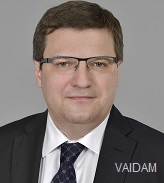
Prof. Dr. med. Michael Hans Frank Schweigert
Professor, 18 years of experience

Robotic thymectomy, Minimally invasive thoracic surgery, Uniportal thoracoscopy, Interventional bronchoscopy, Thoracic wall, Diaphragm tumors

Consultant, 19 years of experience

Angioplasty, Stent placement, Ablation, Pacemakers and implantable cardioverter defibrillators (ICDs)

Consultant, 10 years of experience

Cardiac Arrhythmias, Atrial Septal Defect, Atrioventricular Septal Defect
Our Services for Angiography in Germany
Transparent - Professional - Without Hassles
Angiography is an X-ray procedure that examines blood arteries. Because blood vessels are difficult to see on a standard X-ray, a special dye must be injected into your blood first. This draws attention to your blood vessels, making it easier for your doctor to spot any abnormalities. Angiograms are the X-ray pictures generated during angiography.
Angiography is a procedure that examines the condition of your blood arteries and the flow of blood through them. It can aid in the diagnosis or investigation of a variety of blood vessel issues, including:
Atherosclerosis is a narrowing of the arteries that increases the risk of a stroke or heart attack.
Atherosclerosis of the peripheral arteries – Leg muscles have a lower blood supply.
An aneurysm is a protrusion in the brain.
It can provide pictures of blood vessels in a variety of organs. As a result, angiograms are frequently used to assist doctors in diagnosing disorders affecting the heart, brain, arms, and legs. Angiograms can be used to identify anomalies in the blood vessels, such as weakening blood vessels, plaque deposits, and blood clots.
Angiography comes in a variety of forms, depending on which area of the body is being examined.
The following are examples of common types:
Coronary Angiography - a procedure that examines the heart and blood arteries nearby.
angiography of the brain — a procedure that examines the blood arteries in and around the brain.
Pulmonary Angiography - a procedure that examines the blood arteries that supply the lungs.
Renal Angiography is a procedure that examines the blood arteries that feed the kidneys.
A catheter is a long, thin, flexible tube that is placed into an artery and carefully directed to the location to be studied. When this is done, you may feel some pressing and tugging, but it should not be uncomfortable.
Angiography takes around 30 minutes to 2 hours to complete.
Eight hours before the angiography, don't eat or drink anything. Make arrangements for someone to drive you home. Because you may feel dizzy or light-headed for the first 24 hours following your cardiac angiography, you should have someone remain with you the night after your test.
Angiograms are performed in the radiology or X-ray departments of hospitals.
In preparation for the examination:
You'll be awake most of the time, although you could be given a sedative to help you unwind.
A small cut (incision) is made across one of your arteries, generally around your groin or wrist, while you lie on an X-ray table. A local anaesthetic is given to numb the region where the cut is made.
A tiny flexible tube (catheter) is introduced into the artery and gently directed to the location to be studied (such as the heart)
After injecting a dye (contrast medium) into the catheter, a series of X-rays are obtained as the dye passes through your blood arteries.
You could feel weary, and the incision site will probably be sore for up to a week. Bruising might persist up to two weeks.
After an angiogram, your groin or arm may have a bruise and feel sore for a day or two.
Patients need 8-12 hours of bed rest following coronary angioplasty, according to researchers' clinical experience. The cornerstone of related research throughout the world is determining the best period for bed rest following angioplasty and removing the arterial sheet.
Your groin or arm may bruise and be uncomfortable for a day or two after an angiography. For many days, you can do light tasks around the house but nothing hard. Your doctor may give you precise advice about when you may resume routine activities like driving and returning to work.


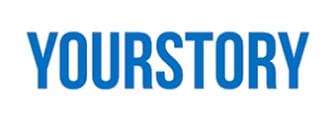



NABH Certified Healthcare Discovery Platform
Vaidam is NABH certified healthcare discovery platform that will connect you to top-notch medical experts, hospitals, wellness options, and trusted travel partners to help identify and make the right healthcare choices.

Researched & Personalized Treatment Plan - Under One Roof
You can search for the best hospitals, read about them, view photographs of the facilities at the hospitals and the places at which the hospitals are located, and check the cost of treatment.

Quality Treatment Within Your Budget
As soon as you post an enquiry, the patient relation team will collect details from you, share them with the doctors and hospitals on Vaidam's panel, and get a personalized treatment plan. We research to get quality treatment within your budget.

Treatment to Travel
Vaidam concierge assists patients, to get medical Visa, the best airline fares and arrangements for your stay. Our concierge also helps you with daily travel, language, and food concerns. Vaidam does everything to be your perfect host. All of Vaidam’s services are free of cost to patients.

International Reach
Vaidam Health has network in 15+ countries, which includes India, Turkey, UAE, Germany, South Korea, Thailand, Malaysia, Spain.
Note: Vaidam Health does not provide medical advice, diagnosis or treatment. The services and information offered on www.vaidam.com are intended solely for informational purposes and cannot replace the professional consultation or treatment by a physician. Vaidam Health discourages copying, cloning of its webpages and its content and it will follow the legal procedures to protect its intellectual property